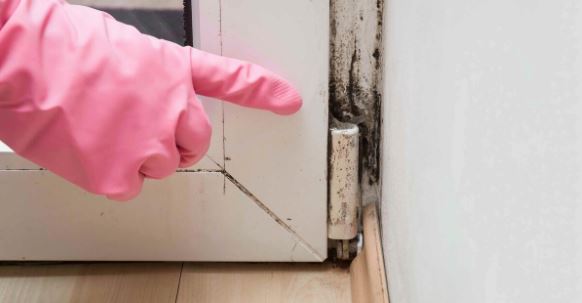Exposure to black mold in Long Beach residences poses serious health risks. Prolonged exposure can lead to respiratory problems like coughing, wheezing, and shortness of breath, as well as skin irritation such as redness, itchiness, and rashes. Vulnerable populations like children and the elderly are particularly at risk for adverse effects. Long-term consequences may include chronic respiratory issues and cognitive impairments. Implementing mitigation strategies, such as prompt mold remediation, proper ventilation, and maintenance of indoor air quality, is essential in combatting black mold. Understanding these risks is crucial for safeguarding health in Long Beach residences.
Health Effects of Black Mold Exposure
Exposure to black mold can cause a range of health issues, including respiratory problems and skin irritation. When black mold spores are inhaled, they can trigger allergic reactions or asthma symptoms in susceptible individuals. The respiratory issues may manifest as coughing, wheezing, shortness of breath, or chest tightness. Prolonged exposure to black mold can exacerbate existing respiratory conditions, making it essential to address any mold infestations promptly.
In addition to respiratory problems, contact with black mold can lead to various skin conditions. Skin irritation, redness, itchiness, or rashes may develop upon exposure to mold spores. Individuals with sensitive skin or allergies are particularly vulnerable to these effects. It is crucial to wash the skin thoroughly after potential contact with black mold and seek medical attention if persistent skin issues arise.
Understanding the potential health effects of black mold exposure underscores the importance of maintaining a mold-free environment. By addressing moisture issues promptly and ensuring proper ventilation, individuals can mitigate the risks associated with black mold and safeguard their respiratory health and skin well-being.
Symptoms Caused by Black Mold
Numerous symptoms commonly associated with black mold exposure include respiratory issues, skin irritation, and allergic reactions. Respiratory issues can manifest as coughing, wheezing, shortness of breath, and sinus congestion. These symptoms occur because inhaling mold spores can irritate the respiratory tract, leading to inflammation and discomfort. Skin irritation is another common symptom of black mold exposure, presenting as rashes, itchiness, or redness upon contact with mold spores or mycotoxins. Individuals with sensitive skin may experience more severe reactions. It is important to note that these symptoms can vary in intensity depending on the individual’s sensitivity to mold, the amount of exposure, and the type of mold present in the environment. If you suspect black mold in your residence and are experiencing these symptoms, it is advisable to seek medical attention and address the mold issue promptly to prevent further health risks.
Vulnerable Populations at Risk
Vulnerable populations may face heightened health risks when exposed to black mold in Long Beach residences. Children, with their developing immune systems, and the elderly, who often have weakened immune systems, are particularly susceptible to the adverse effects of black mold exposure.
Children exposed to black mold may experience respiratory issues like coughing and wheezing, allergies, skin irritation, and asthma exacerbation. Prolonged exposure could lead to more severe respiratory problems. Similarly, the elderly, with their reduced ability to fight off infections, may suffer from respiratory symptoms, fatigue, headaches, and cognitive issues when exposed to black mold.
For both children and the elderly, black mold exposure can exacerbate existing health conditions and lead to a decline in overall well-being. It is crucial for caregivers and family members to be vigilant for signs of mold in residences where vulnerable populations reside, and to address any mold issues promptly to safeguard their health.
Long-Term Health Implications
With prolonged exposure to black mold in Long Beach residences, individuals may face significant long-term health implications that necessitate careful monitoring and intervention. Respiratory issues are a common consequence of ongoing mold exposure, with symptoms ranging from persistent coughing and wheezing to exacerbation of asthma and other respiratory conditions. The mycotoxins produced by black mold can lead to chronic inflammation in the respiratory system, potentially causing long-lasting damage if not addressed promptly.
Moreover, cognitive function may also be affected by prolonged exposure to black mold. Studies have shown a correlation between mold exposure and cognitive impairments, including difficulties with memory, concentration, and problem-solving skills. These effects can be particularly concerning for children and older adults who may already be vulnerable due to their developing or aging brains.
Given the serious nature of these long-term health implications, it is crucial for individuals living in Long Beach residences to be proactive in addressing any signs of black mold contamination. Early detection, thorough remediation, and ongoing monitoring are essential steps to safeguarding respiratory health and cognitive function in the face of black mold exposure.
Mitigation Strategies for Black Mold
Implementing effective mitigation strategies is crucial in combating the presence of black mold in Long Beach residences to ensure the health and safety of occupants. Prevention methods play a key role in reducing the risk of black mold growth. Regularly inspecting and addressing any leaks in plumbing, roofs, or windows can help prevent moisture buildup, which is essential for mold proliferation. Proper ventilation, such as using exhaust fans in bathrooms and kitchens, can also aid in moisture control.
When black mold is identified, prompt remediation techniques are vital. This includes physically removing the mold and ensuring affected areas are thoroughly dried. Utilizing specialized cleaning agents designed to eradicate mold is often necessary, along with disposing of porous materials that cannot be effectively cleaned.
Maintaining good indoor air quality is crucial in preventing black mold. Air purifiers equipped with HEPA filters can help capture mold spores, improving overall air quality. Additionally, keeping humidity levels below 60% can deter mold growth, making dehumidifiers a valuable tool in mold prevention. By implementing these strategies, residents can create a healthier living environment free from the dangers of black mold.

